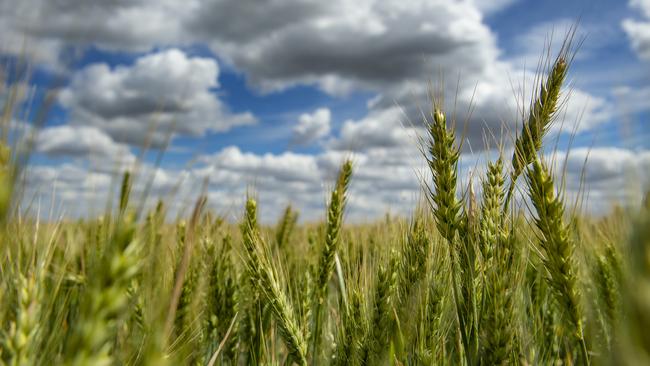Buyers hunt for quality hay while grain growers welcome rain
In an unconventional season, hay buyers are moving away from oaten and vetch hay while rain brings relief to grain growers.

As we pass the shortest day of the year, hay buyers are out hunting for the best quality hay their money can buy.
This season, some buyers say the best they can find is pasture hay from the central highlands of Victoria.
It’s an exceptional set of circumstances that brings about this preference for pasture hay. Supplies of high-quality vetch hay are often the first hay type to run low in any season, but non-rain damaged vetch was short from the start of the season.
Listings of the lower grades of visually damaged vetch hay have declined 30 per cent in the past month alone and there is plenty of cold weather still to pass over southeastern Australia before the warmer days return in September.
The excessive rainfall last September and October spoiled hundreds of thousands of tonnes of hay in the Riverina, Victoria and South Australia.
The thin delicate leaves of vetch soon discoloured after relatively small amounts of rain, especially when the windrows were nearly ready for baling.
Some buyers have been worried about the impact potential fungi and mould of vetch hay may have on the performance of their animals.
The cereal hays also were hit with rain last spring. While many cannot afford any other type of hay, buyers have shown a preference for hay that is not bleached from rain damage during curing.
The most recent quality twist in the 2020-21 hay season has been the mice plague of NSW. Although mice can be found in northern Victoria and South Australia, the numbers are more contained and haystacks have generally avoided the pungent smell of mice infestations of hay.
Accordingly, when Bega dairy farmers come looking for hay, their closest stocks in the south west slopes of NSW near Harden is often both weather-damaged and impacted by nesting mice.
Those buyers need to pay at least $100 a tonne freight to cart their hay over the Great Divide, but this year they are travelling double the distance — 750km — to Victoria’s Central Highlands to secure it.
Pasture hay from southern Victoria is typically baled a month later than northern Victoria and managed to avoid the big rainfall that fell earlier last spring.
Selling between $190 and $220 a tonne ex farm and testing approximately 17 per cent protein and 9.0 ME units of energy, this pasture hay is rising to the top of buyers’ preferences. Although pasture hay and silage remain the largest volume of the fodder commodities produced in Victoria, cereal hay represents the largest volume of fodder traded.
When livestock operators are in a feed gap and need to buy hay, pasture hay from other graziers is not typically readily available on the market.
Hay merchants near Clunes comment that the last time they moved hay to Bega was 45 years ago, but it’s a useful part of their interstate sales this year.
HEAVY RAIN BRINGS RELIEF TO WIMMERA, MALLEE GROWERS
Rain has given both crops and growers some relief last week as a large portion of the Wimmera received 30-50mm of rain. Paddocks near Horsham received 45mm which will boost yield potential following the dry April.
Growers in the central and northern Mallee will be looking for rain from another front that is moving across southeastern Australia this week.
Trader bids for wheat and barley into Victorian ports and mills have changed little from last week but the softer trend in prices remains.
Australian Standard White wheat is quoted at $327 a tonne delivered to Melbourne users or Geelong port, while BAR1 grade barley is quoted at $277 a tonne delivered to Melbourne and $280 a tonne delivered to Geelong.

That Geelong price for barley sits at a $27 a tonne premium over the prevailing price for in-store barley and illustrates the logistical stress that exists with the ongoing shortage of trucks to deliver sufficient grain direct to ports to meet shipping deadlines.
Despite the relatively stable prices for cereal grains, international markets have been volatile.
In the US the headers are busy in Texas and Oklahoma and are starting to roll in Kansas.
The influx of new-crop winter wheat contributed to weakness in cash and futures markets, with Chicago falling $8.80 a tonne or 3.3 per cent for the week.
That grower selling pressure coincided with trader liquidation and rain that provided improved crop conditions for US corn and soyabean.
Cash markets were also weaker with wheat prices offered to Egypt lower than the market had expected. Amid this weakness, China was reported to be a strong buyer for wheat, corn and soyabeans.
Currency changes have buffered the lower international grain prices. A US Federal Reserve report that it intends to raise interest rates twice before 2023 spooked the market, boosting the US dollar and pushing down the Aussie dollar by US2 cents to US75 cents.
Oilseeds have seen the greatest falls in the markets with the December contract of Chicago soyabeans falling $62 a tonne and the January contract for Winnipeg canola $58 a tonne, or 7 per cent.
New-crop canola prices are quoted at $707 a tonne on a Geelong port basis, $85 a tonne under the season peak of $792 a fortnight ago.
According to brokers, current season nugget lentils are quoted at $685 a tonne delivered Melbourne packers and traders are bidding $800 a tonne for new-crop.
MORE
MIXED RESULTS FOR HAY, BUT GLOBAL OILSEED MARKETS TAKE A DIVE


